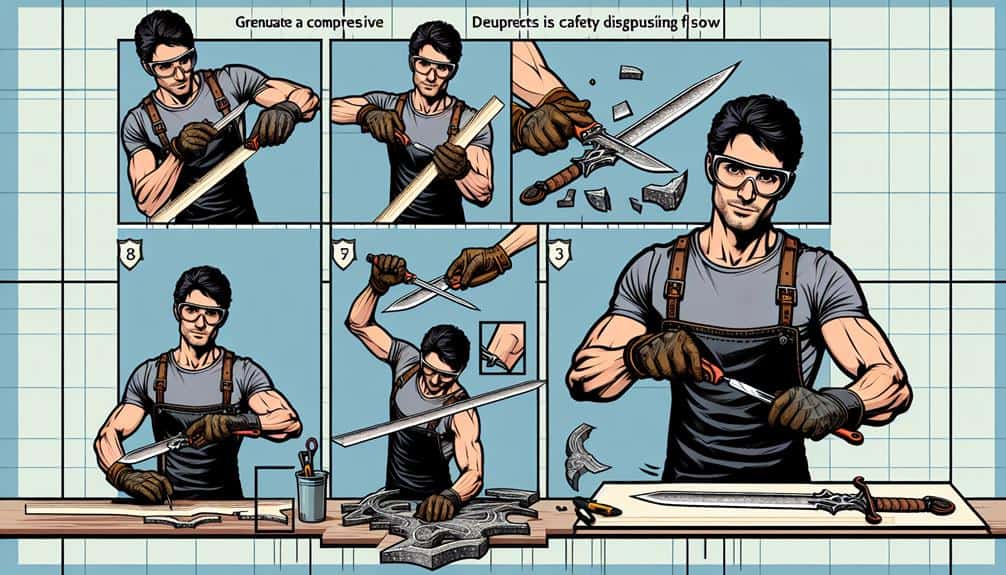When it comes to psychological thrillers in LARPing, you might worry about creating a truly immersive experience. However, by focusing on crafting intricate character backstories, building suspense with unexpected plot twists, and utilizing mind games and manipulation techniques, you can take your game to the next level.
Imagine the thrill of keeping players on the edge of their seats as they navigate through a web of secrets and deception, all while trying to outwit each other in a battle of psychological prowess.
Key Takeaways
- Craft intricate character backgrounds for depth and complexity.
- Keep players on edge with suspenseful plot twists.
- Employ mind games and moral dilemmas for intense gameplay.
- Enhance immersion with psychological realism and interactive therapy scenarios.
Crafting Intriguing Character Backstories
Crafting intriguing character backstories is vital in psychological thrillers in LARPing to immerse players in a world filled with mystery and suspense. Character motivations play a pivotal role in driving the narrative forward, creating depth and complexity within the game.
When developing character backstories, it's important to dive into the hidden secrets that shape their actions and decisions throughout the game. These hidden secrets not only add layers to the character but also provide opportunities for surprising revelations that can captivate players.
Building Suspenseful Plot Twists
To create suspenseful plot twists in LARPing psychological thrillers, intricately weaving unexpected turns into the narrative keeps players on the edge of their seats, keenly anticipating the next revelation. Unexpected betrayals and shocking reveals are powerful tools to shake up the storyline. Players thrive on the unpredictable nature of these twists, heightening the tension and excitement within the game.
Unraveling mysteries and exposing hidden agendas can add layers of complexity to the plot, creating a sense of unease and suspicion among participants. By introducing subtle clues and gradually peeling back the layers of deception, you can lead players down a twisted path of discovery. These revelations should challenge their assumptions and force them to reevaluate their strategies and alliances.
Utilizing Mind Games and Manipulation
Weaving a web of psychological manipulation and mind games within LARPing scenarios immerses players into a domain where reality blurs with deception, intensifying the thrill of unraveling intricate schemes.
- Gaslighting Dynamics: Introducing subtle gaslighting dynamics can make players question their own perceptions and reality, adding a layer of psychological unease to the game.
- Emotional Manipulation: Leveraging emotional manipulation tactics can create intense role-playing experiences, pushing players to explore complex feelings and relationships within the game world.
- Power Struggles: Implementing power struggles between characters can fuel competition and drive players to engage in strategic manipulation to gain the upper hand, enhancing the overall tension and drama.
- Moral Dilemmas: Presenting players with moral dilemmas that require them to make tough choices can lead to internal conflicts, challenging their beliefs and values, and fostering a deeper level of engagement with the storyline.
Creating Tension Through Conflict Resolution
Creating tension through conflict resolution in LARPing scenarios heightens player engagement by introducing obstacles that challenge their problem-solving skills and interpersonal dynamics. Role-playing dynamics play a vital role in crafting conflicts that push participants beyond their comfort zones, encouraging them to explore deeper into their characters' motivations and relationships. By intertwining emotional stakes within these conflicts, players become emotionally invested in the resolution, intensifying the overall experience.
Effective conflict resolution in LARPing involves setting up scenarios that require negotiation, compromise, and decision-making under pressure. This not only tests the players' ability to think on their feet but also forces them to confront difficult choices that may have lasting consequences within the game world. Encouraging players to communicate openly, express their character's desires and fears, and work together towards a satisfactory resolution fosters collaborative storytelling and builds trust among participants.
Conflict resolution serves as a vehicle for driving the narrative forward, deepening character development, and fostering a sense of camaraderie among players. Mastering the art of creating tension through conflict resolution can elevate LARPing experiences to new heights, providing a rich and immersive playground for exploring human emotions and relationships.
Enhancing Immersion With Psychological Realism
Enhancing immersion with psychological realism in LARPing involves delving into characters' inner thoughts and motivations, adding layers of complexity to the gameplay experience. When aiming to immerse players deeply into the game world, focusing on psychological depth can notably enhance their experience.
Here are four key strategies to help you achieve this:
- Character Backstories: Develop detailed backstories for your characters, including past traumas, fears, and desires. This will provide a rich foundation for role-playing and allow players to connect more deeply with their characters.
- Emotional Triggers: Incorporate emotional triggers into your storyline to evoke genuine reactions from players. By tapping into deep-seated fears or aspirations, you can create intense and memorable role-playing moments.
- Internal Conflict: Introduce internal conflicts within characters, such as moral dilemmas or conflicting motivations. This adds complexity to decision-making and encourages players to explore their characters' psyche.
- Interactive Therapy: Design scenarios where characters must confront their inner demons or unresolved issues. This interactive therapy can lead to profound character development and immersive role-playing experiences.
Frequently Asked Questions
How Can I Ensure That My Character's Backstory Is Unique and Memorable Without Being Too Cliche?
To craft a unique character backstory, plunge deep into your character's motivations, flaws, and desires. Avoid cliches by adding unexpected twists or exploring unconventional paths. Make your backstory memorable by infusing it with personal connections and emotional depth.
Are There Any Tips for Incorporating Plot Twists That Are Unexpected but Still Make Sense Within the Game World?
When crafting plot twists for LARP, aim for unexpected revelations that still fit the game world. Weave in clues subtly to guarantee surprises feel logical. Embrace the challenge of surprising but coherent twists to captivate players.
How Can I Effectively Use Mind Games and Manipulation Tactics Without Causing Harm to Other Players or Crossing Boundaries?
To effectively use mind games and manipulation tactics in LARPing, start by setting boundaries and building trust with the players. Respect others' comfort levels and always prioritize consent. Engage in collaborative storytelling while creating a safe space for all participants.
Are There Any Strategies for Resolving Conflicts in a Way That Adds to the Tension and Drama of the Game?
In conflict resolution for LARP, heighten suspense by embracing dramatic resolutions. Tension fuels the narrative; use it to craft compelling story arcs. Collaborate on solutions that deepen intrigue, adding layers to the game's immersive experience.
How Can I Maintain a Sense of Psychological Realism Without Going Too Far and Potentially Triggering Other Players?
Maintaining psychological realism in LARP involves balancing realism and sensitivity. Setting clear boundaries and open communication with players is key. Respect triggers, use safety tools, and prioritize player comfort to enhance immersion without crossing lines.



